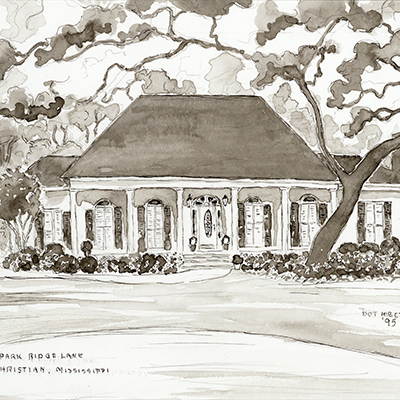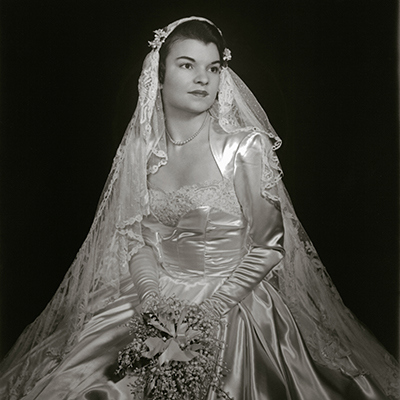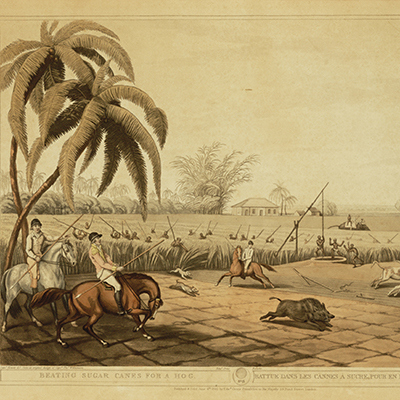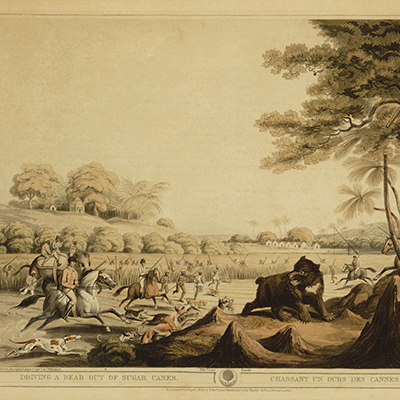
An Interview with Marion Christ Clerc of the Inez Burguières Christ Branch
OJ Reiss and Marion Christ Clerc met at Marion’s home in Pass Christian, Mississippi. in July 2011 and again in August. The informal discussion focused on Marion's family memories and on the specifics surrounding certain photographs, paintings, and prints that Marion has in her possession and that are part of her family history. Rather than quoting Marion's comments, OJ summarized her thoughts and words to best reflect a sequential order of the conversation. It was edited for brevity. Marion married Fred Clerc on Feb. 1, 1954 and Cathy, their only child, was born in December of 1956. Cathy Clerc Eagan, her daughter, was present for the first interview. Cathy is an only child and has three children: Courtney Clerc Eagan, Caroline Clerc Eagan, and Fredrick Leitz Eagan, III. Marion turned 80 on July 31, 2012. With the exception of severe back problems, she is in good health. Marion's home in Pass Christian, as shown in the water color on this page, is beautiful and very formal. She has decided to sell the home sometime in the future and move into an independent living facility. Marion faces a serious back condition and has been advised not to seek surgery as a solution.




OJ comments - What struck me when I visited Marion was how orderly and spotlessly clean her home was, and how completely prepared for the next hurricane she was. I was particularly drawn to the magnificent condition of her sterling silver. It simply was as cleaned and polished as I have ever seen silver. All of the pieces were tastefully placed throughout the house. As to preparation for hurricanes, Marion has a generator big enough to power almost the complete home, and has permanent sliding metal storm covers for all windows. Marion's experience during Hurricane Katrina was good - no water and no wind damage. Her property sits high enough so that the storm surge did not reach her, although water was within 15 feet of the structure. A beautiful, huge oak tree sits in front of the house, but didn't cause damage during the storm. Marion also owns a condo in Pass Christian that was heavily damaged during Katrina. During the actual storm Marion invited friends, who were determined to ride-out the storm, to stay at her home while she had made arrangements to stay elsewhere.
The discussion started as Marion pointed out that the original Pass Christian summer home of the Burguières was located almost in a line running parallel with Menge Ave., directly south from her home toward the beach. That home has been referred to as "The Cottage" in older photographs. She remembers it being set back but facing the water. She is not sure how far from the seawall the home was located nor is she sure whether the home was owned by Jules, the Burguières brothers or by the JMB Company. Marion believes the home was destroyed by a 1947 hurricane. The last people to own the property and the home that replaced the Burguières cottage were Blair and Cybil Favrot.
We talked about 2 beautiful pictures hanging on the right wall, as you enter the formal front door. These were given to Marion in the late 1970's by Ed Burguières. He knew she had always loved them. Both prints were purchased in London and both depict animals attacking workers in sugarcane fields. The animal in one print is a huge boar and the animal in the other print is a bear. Marion said that she thought both prints should be given to the JMB office in Franklin, La. sometime in the future. Apparently, the pictures originally hung in the Cypremort cottage that Ed Burguières and his wife Elsie lived in at Louisa. That cottage is also the home that the company has most recently rebuilt and raised 13 feet as per the requirements for insurance coverage. It was located on the right side of the "Big" house that Uncle Jules Jr. lived in. The "Big" house is the one that originally had the swinging bridge in front of it. Marion said that it is possible that Uncle Jules had originally bought the pictures on one of his trips abroad. Whoever purchased the prints was obviously interested in the sugarcane fields which are depicted, and not necessarily the location of the cane fields in the picture, which could either be South or Central American or even the Caribbean.
Marion remembered two other structures on the Burguières property besides the home that Ed and Elsie lived in. One was to the right as you face Ed and Elsie's place. It could accommodate guests but was very ordinary. It still stands today. The other was best described as a small, cinder block storage shed. It may have been the structure that Uncle Jules used to store some of his books. It was located behind the "Big" house and does not exist today.
The conversation shifted as we began to look at different pictures hanging on the walls of the hallway. The first was a photograph of her mother and father and another of her grandmother, Ida Broussard Burguières. Ida's husband and Marion's grandfather was Jules M. Burguières, Sr. Marion's father was Leopold Dunbar Christ (1896-1960). He was a stock broker with Merrill Lynch. His friends called him Dunnie.
Marion's mother was Inez Burguières (1892- 1965), the only child of Jules, Sr. and Ida Broussard. Inez had been previously married to Philip Williams from New Orleans. Inez wanted children. Philip did not. That marriage ended in divorce. After her first marriage, Inez started dating Dunnie, who she had previously known. They were eventually married in New York and lived in New Orleans. As Catholics, they had to wait many years to have their marriage blessed by the church. When Mr. Williams died, Inez and Dunnie had their marriage consecrated.
As a child, Inez was fascinated by horses. She loved them. The story goes that Inez's parents, Ida and Jules, wanted her to be Queen of Momus, a highly regarded and exclusive carnival organization. Inez knew how expensive that would have been. She told her parents that she preferred that the money be spent on a new horse! As an adult, she also loved to cook and read but never developed a knack for gardening, according to Marion. As the children came, her full-time job became being a mother. The children were Helen, Marion, and Ernestine "Kiki."
Because of serious allergy issues that Kiki developed when she was 2 years old, Dr. Jack Strange, who was Dunnie's sister's husband, recommended that the family consider moving to Pass Christian for the summer, which they did. They rented Bert Henry's house for at least one summer then bought a home that was south of old Hwy. 90. On a framed picture post card of that home hanging on Marion's wall, a footnote on the card identifies the home as being originally owned by Dr. Robert Strong. Marion remembers that her mother and father bought the home from Dr. Strong. In those days there was no beach behind the property, just a sea wall. Later, when the new Hwy. 90 was built, the beach was extended and the sea wall was moved. The result was that their home ended up being one of the only properties between the new Hwy. 90 and old Hwy. 90 which became Scenic Drive. Marion remembered the family riding out the 1947 hurricane in that home. In those days hurricanes were not named. There had been no indication of a storm the night before the hurricane hit. The morning of the storm, Marion and her father were up early and all seemed well. However, within what seemed like a few minutes, the water had risen to the top of the sea wall. They fled to the upper floor as the surge came ashore. Their basement was quickly flooded. Everyone ran through the front of the house including Marion's grandmother, Ida, who lived with the family at that time. The family took refuge at a neighbor's home. Luckily, the home was not destroyed by the hurricane. The majority of the damage was located in the basement and was eventually repaired after the storm. During the recollection of the storm details, Marion said that as long as Ida lived with Inez and Dunnie, she walked to church every morning for Mass.
Another picture on the wall is of Albertine with Marion selling pralines in front of the house in 1939 or 1940. Albertine and Josephine were nurses for the children and lived with the family. Adjacent to that picture is another of Dunnie dressed as Zachary Taylor for some social event in Pass Christian. Albertine is in the photograph along with an unidentified black man who is driving the wagon. Marion also pointed out a wonderful picture of herself as a little girl with her hands in her pockets. She looks like either Tom Sawyer or Huck Finn. A water color of Marion's home that she now lives in is also a part of her hallway picture gallery. A few years after the 1947 hurricane, Dunnie and Inez bought a home at 1020 E. Second St., also in Pass Christian, MS.
OJ comments - I remember that home because during my early childhood when I attended St. Stanislaus Camp in Bay St. Louis, MS., Inez picked me up at camp and brought me back to her home for lunch and a swim. It was an exciting adventure for me because not only did Inez have a driver for her car, but the car was the first air-conditioned vehicle I had ever ridden in. My grandmother, Mrs. Henry Burguières, known as Mummy, was a good friend of Inez and she had arranged the activities.
Marion did not remember much detail about her grandparents Jules and Ida. Ida's parents were Ernestine Patout (1847-1886) and Felix Broussard. Marion's mother Inez (1892-1965) was the only child of a second marriage between Ida Broussard and Jules Burguières, Sr. as mentioned before. Jules's first wife was Marie Corinne Patout and they had ten children. Two died at an early age. The eight remaining children were Denis P. J. Burguières, Marie Louise Burguières, Jules M. Burguières, Jr., Ernest A. Burguières, Joseph E. Burguières, Florence C. Burguières, Henry I. A. Burguières, and Charles Patout Burguières. Inez was born into quite an extended family of siblings. And Inez's mother, Ida, ended up with responsibility for nine children, eight that belonged to Jules and one that was her own.
Also of interest was that Jules's first and second wives were first cousins. In 1893 Ida, Jules Sr., and the nine children moved into a home in the Garden District of New Orleans. Marion recalls that besides being a busy mother, Ida worked for the Red Cross making bandages. The Garden District home was located on the uptown, river side corner of Prytania St. and Third St.
Marion talked about Fred Clerc, her first husband. He was a food broker and worked in the business that his father started. He and his sister inherited the business and Fred bought his sister out. His office was on Magazine St., right across the street from the Bon Ton restaurant in New Orleans.
Fred's passion was sailing. Marion met Fred when he came to Pass Christian for a sailing regatta. Marguerite Boh Hadden introduced them in 1953 at the Bay Waveland Yacht Club. They were married on Feb. 1, 1954 and Cathy, their only child, was born in December of 1956. Fred and Marion sailed a great deal at the Pass Christian Yacht Club. Marion had also sailed prior to meeting Fred. She remembered, "Fred's theory was to marry a girl who had won many races sailed in Pass Christian, then bring her back to New Orleans and get her involved at Southern Yacht Club so she could represent Southern Yacht Club at the KNOST Regatta in Pass Christian." It was like she was a double agent.
The first home where Marion and Fred lived was at 6071 General Diaz out near the Southern Yacht Club followed by a home they built at 7912 Walmsley Ave., in uptown New Orleans. They lived there for two and a half years before Marion's father died of an aneurysm in 1960 while trying on clothes in the men's department at Terry and Juden's clothing store in downtown New Orleans. Inez, who lived in Pass Christian, had previously suffered a stroke and was being cared for at home. Inez required around the clock care at that time. The three girls, Marion, Kiki, and Helen drove over to the Pass to tell their mother that her husband had died of an aneurysm. After the death of her husband, Inez continued to live in Pass Christian. During that time, Marion and Fred built a duplex on Apricot and Dublin off of Carrollton Ave. in New Orleans. They decided to move Inez from Pass Christian to New Orleans and have her live with them. Inez was in her 80's at the time. The arrangement worked well. Fred and Marion lived upstairs and Inez lived downstairs. They had two people who cared for Inez on 12 hour shifts. She died on February 2, 1965. After Inez died, Marion and Fred moved to 1504 Arabella in uptown New Orleans.
Marion mentioned that she could remember only one person from the older generations who had interest in the Burguières family history. Her name was Polly Grazel and she was Marion's grandmother's sister (Ida's sister).
Ida was called both "MaMare" and "Taunt" by Marion and her sisters. She spoke fluent French and was everybody's favorite. MaMare, as the story goes, took Marion and Kiki out to the plantation every summer. The girls loved it! Marion was 12 and Kiki was 13. Helen, for some reason, never went on those trips. Ernest drove them. The last 50 miles of the trip was a dirt road, so you can imagine the dust and the heat. There was no air-conditioning in those days. They would always stop in Franklin and have milk shakes at the drug store. Marion remembered stopping at the country store and watching hogs head cheese being made. During a summer visit, Ed took Marion down in the salt dome. That was a special treat and is not allowed today.
While out at the plantation, Uncle Jules would not allow the girls to wear anything but pants. Absolutely, no shorts! On one of those trips, Marion remembers watching mules pulling the water carts out to the field hands. It was fascinating to her.
OJ comments - Roughly 10 or 12 years later I spent two weeks each summer, over a period of about 4 years, visiting my uncle, Chapman 'Bunny' Burguières. Bunny let me take the field hands out to the field and bring them back for lunch in his red truck. I also took them water. As I remember, I did that every day. I also picked up eggs from the chicken coop; shot nutria (rats) from the levee as they invaded the cane fields and cut grass around Bunny's house. Bunny was Henry I. A., Sr.'s son and my uncle.
Marion remembered the joy of walking over the swinging bridge in front of the "Big" house with Kiki, and also watching cows being milked. She recalled the huge breakfasts that were served at 7:30 AM every day and that the cook at the house at that time was Ed Eagan, a big black man. The date was probably the late 1930's or early 1940's. Another meal was served at noon and then the girls were sent to their rooms to rest for a couple of hours. Around 3 PM, Marion and KiKi would come downstairs and sit on the porch. Ed and Uncle Jules would also spend time on the porch. Marion recalled them talking plantation business during those afternoon hours.
Continuing down her hallway, Marion pointed out photographs of Helen, herself, Kiki, and their mother, Inez. Another picture is of Inez on a horse. As mentioned before, the family wanted her to be Queen of Momus but all Inez wanted was to take the money and buy a horse. Horses were an important part of her younger life. Another picture is of Inez at about 32 years old and Helen at about age four. As the children were born, Inez spent all of her time raising her family.
Pictures of the family hang everywhere. Further down the hall is a picture of Cathy's children, Courtney, Caroline, and Fred standing in front of the New Orleans Roman Candy Man. The Taffy Man! Cathy was married to Rick Eagan for 25 years. Rick's father was Fritz Eagan, the senator from New Orleans. Fritz Eagan and his four brothers owned Leitz-Eagan Funeral Home and Eagan Insurance Agency. Rick and Cathy were divorced in 2010.
Moving left up the hallway past the entrance to the kitchen, are large pictures of Cathy as Queen of Athenians in 1978. Cathy's veil in the larger photograph belonged to Ida Burguières, her great grandmother. Ida loved to travel and had a little antique shop in the French Quarter. She bought the veil on a buying trip to Paris. Originally, the veil was a table cloth. Helen, Marion, and her daughter Cathy each wore the veil when they were married.
Ida bought furniture and other antiques on those trips to Europe and she also took Inez with her. She even took her out of school. They would travel on freighters that stopped at many different ports in Europe. In those days, freighters took 10 or 20 passengers on-board as they crossed the oceans. Marion said that her mother did this with Ida many times. It was nothing to them to hop on-board a ship and go. Also hanging on a wall at the end of the hallway are two of Ida's beautiful framed Ivory fans.
Marion recalled that Ida's mother, Ernestine, lived out on the plantation and also walked to Mass every morning. She had to cross railroad tracks to get to church. Ernestine was also a sleep walker. One night while sleep walking, she headed toward the church and crossed over the tracks. A train was approaching the crossing. The engineer blew his whistle and slammed on the breaks. Unfortunately, Ernestine was hit and killed by the train. KiKi, Marion's sister, is named after Ernestine. There is a small portrait of Ernestine in Marion's living room.
On the same wall as the Ivory fans is a photograph of Inez posing with her right hand on the back of a chair. Across the hallway is a large resolution document dated 1984 making Fred a lifetime member of the Southern Yacht Club. Fred died of cancer in 1987 at home on Arabella St. He was 64 years old and looking forward to retirement. We backtracked slightly and walked into the entrance hall to Marion's bedroom. On the right is a photograph of Marion's aunt, Lillian Christ Strange, Dr. Strange's wife. She was Dunnie's sister. Also, nearby is an aerial picture of the Southern Yacht Club. Adjacent is another picture of Inez and above that a picture of Ida. There is a photograph of Kiki and Marion on bicycles riding on the seawall, and a photograph of Marion making her first communion in 1943. To the left of that is a picture of Marion, Kiki, and Helen. Fred's sister is on the top of the last picture. There is a photograph of Cathy's children holding a lamb. Quite a picture gallery.
Marion's second marriage was to Bobby Simpson in 1998. They were married two and a half years before he also died of cancer, just as her first husband had.
As we entered the dining room, we were greeted by an enormous dining room set. With seating for 20, the furniture was identified as having been made for Marion's grandmother, Ida.
All grandchildren have interesting names for their grandparents. Marion is no exception. She has been called Manna since her sister Helen's oldest child was very young and could not say Marion. The name stuck, even with all the grandchildren and friends of the grandchildren. Rather then call her Marion or Mrs. Clerc, she was called Manna. We talked about where all of the things in her home would go, when she decides to sell.
Marion recalled the time she was on the JMB Company Board from 1963 to 1979. Abner Hughes was the CPA and Henry Pierson was the attorney. She remembers that when JMB could not afford to pay bills, the Whitney Bank paid them and that was the main reason that JMB was so loyal to the Whitney Bank in later years. On the Board in those days were Abner Hughes, Ernest Burguières, Jr., Marion Clerc, Charles Patout Burguières, Sr., Ed Burguières, and Sam "T." Burguières, Sr. The controversy was always between Ernest and Pat to the point that Abner Hughes had to stand between Ernest and Pat on one occasion. When it came to selling the Company, T. was against it, Marion was against it, and Ed was riding the fence. In the final vote, one vote saved the Company from being sold. As things cooled, Marion remembered that Ed was the one who recommended both Philip Burguières and Ron Cambre for Board positions.
Of all the beautiful things in Marion's home, she showed much interest in a collection of original Mardi Gras figurines that Fred had bought for her years ago. They enjoy a prominent place in her formal living room. Later, she reflected on what would happen to all the formal pieces in her home when she sold the house. She said, "Children today are not going to keep up with all this stuff and that's what really worries me. Even my daughter Cathy's home is not a formal home."


